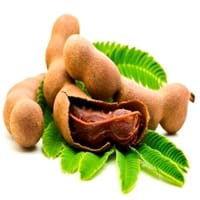Health Benefits
Acidity treatment, Cancer prevention, Good for diabetics, Prevents constipation, Prevents Anaemia
Boosts immune system, Boosts respiratory health, Cancer prevention, Digestive aid, Piles treatment
General Benefits
Boosts immune system, Cures fever, Eye care, Fights against infections, Strengthens bones
Beneficial in improving nerve function, Protects against parasites and worms, Relieves pain
Skin Benefits
Anti-aging benefits, Reduces wrinkles, Skin rejuvenation
Anti-aging benefits, Brightens and lightens complexion, Exfoliates skin, Hydrates skin, Treatment of dark spots
Hair Benefits
Protects hair
Prevents hair loss
Allergy Symptoms
Anaphylaxis, Asthma, Breathing difficulty, Coughing, Drop in blood pressure, Hives, Skin rash, Stuffy nose, Swelling of mouth, tongue or lips, Wheezing
Abdominal pains, Breathing difficulty, Dizziness, Eczema, Fainting, Hives, Itching, Nasal congestion, Swelling of face, Tingling sensation in mouth, Vomiting
Side Effects
Allergic reaction
Decrease in blood sugar levels, Induces acid reflux, Allergic reaction, Tooth decay, May form gallstones
Lactating Women
Not Available
No
Best Time to Eat
Any time except an hour after meal
Along with meal, As a snack in the late afternoon, Don't consume at night and before bed, Strictly avoid empty stomach
Vitamin B5 (Pantothenic Acid)
Vitamin C (Ascorbic Acid)
Vitamin K (Phyllochinone)
Phytosterol
Not Available
Calories in Fresh Fruit with Peel
Not Available
Calories in Fresh Fruit without Peel
Not Available
Calories in Frozen Form
Not Available
Calories in Dried Form
Not Available
Calories in Canned Form
Not Available
Not Available
Season
All seasons
Spring, Summer
Varieties
Dark raisins, White or golden raisins, Sultanas and Currants
PKM 1, Urigam, Hasanur, Tumkur prathisthan, DTS 1 and Yogeshwari
Seedless Variety
Not Available
No
Color
Black, Blue, Green, Purple, Yellow
Brown, Reddish-brown
Shape
Oval
Curving Cylinder
Origin
Central Europe, Western Asia
Africa
Grows on
Not Available
Trees
Soil Type
Clay loam, Sandy loam
Loam, Sandy, Sandy loam, Well-drained
Climatic Conditions
Warm
Humid to dry, Rainfall, Warm to hot climate
Facts about
- 30th April is known as National Raisin Day.
- Fresno, California is known as raisin capital of the world.
- Half of world's raisin supply is produced in California.
- Tamarind is used to prevent body odor.
- African children use the tamarind seeds in games.
- No cases of tamarind toxicity or allergy reported till date.
Top Producer
United States of America
India
Other Countries
Afghanistan, Argentina, Australia, Chile, China, Iran, South Africa, Turkey, Uzbekistan
Africa, Australia, Brazil, China, Mexico, Nigeria, Sudan, Taiwan
Top Importer
Europe
United States of America
Top Exporter
Turkey
Thailand
Botanical Name
Vitis Vinifera
Tamarindus indica
Synonym
Not Available
Tamarindo, tamarindus
Subkingdom
Tracheobionta
Tracheobionta
Division
Magnoliophyta
Magnoliophyta
Class
Magnoliopsida
Liliopsida
Subclass
Not Available
Rosidae
Species
Vitis vinifera
Tamarindus indica
Generic Group
Grape
Tamarind Sub
Difference Between Raisin and Tamarind
We might think that Raisin and Tamarind are similar with respect to nutritional value and health benefits. But the nutrient content of both fruits is different. Raisin and Tamarind Facts such as their taste, shape, color, and size are also distinct. The difference between Raisin and Tamarind is explained here.
The amount of calories in 100 gm of fresh Raisin and Tamarind with peel is 299.00 kcal and Not Available and the amount of calories without peel is Not Available and 239.00 kcal respectively. Thus, Raisin and Tamarind belong to High Calorie Fruits and High Calorie Fruits category.These fruits might or might not differ with respect to their scientific classification. The order of Raisin and Tamarind is Vitales and Fabales respectively. Raisin belongs to Vitaceae family and Tamarind belongs to Fabaceae family. Raisin belongs to Vitis genus of Vitis vinifera species and Tamarind belongs to Tamarindus genus of Tamarindus indica species. Beings plants, both fruits belong to Plantae Kingdom.









